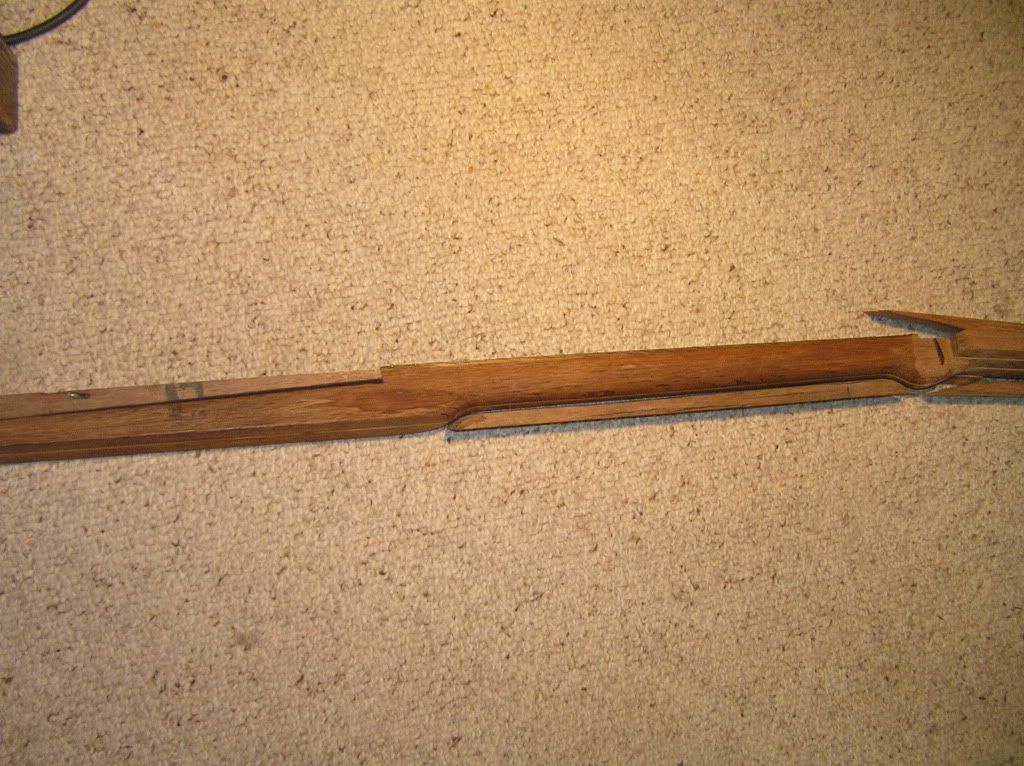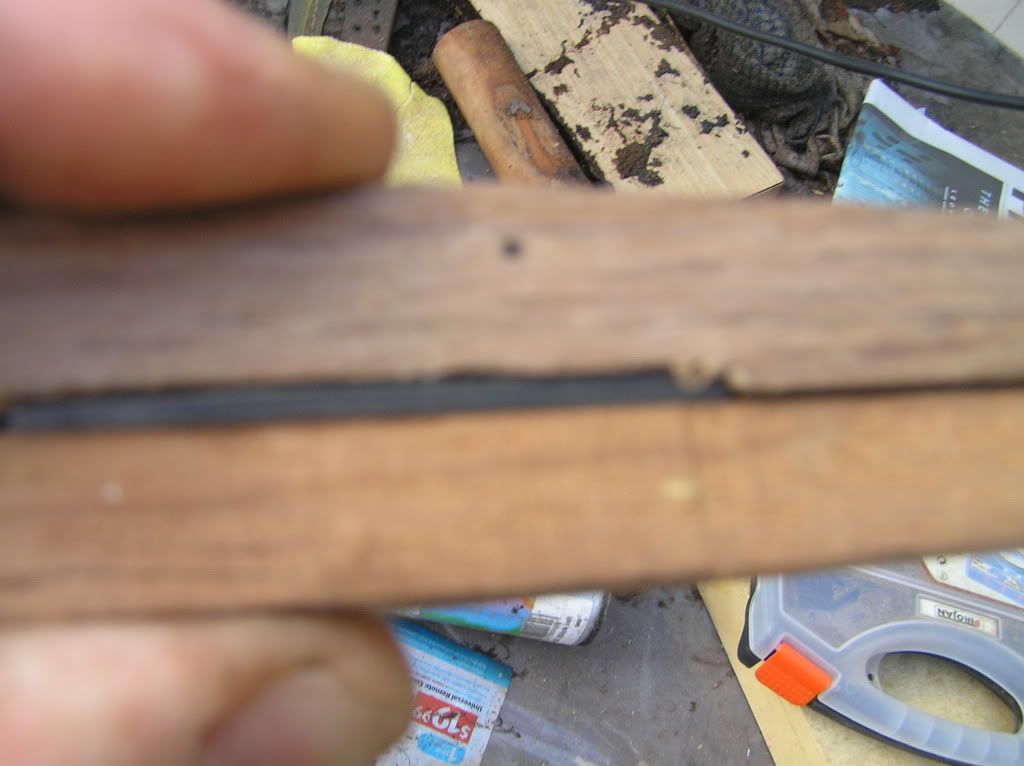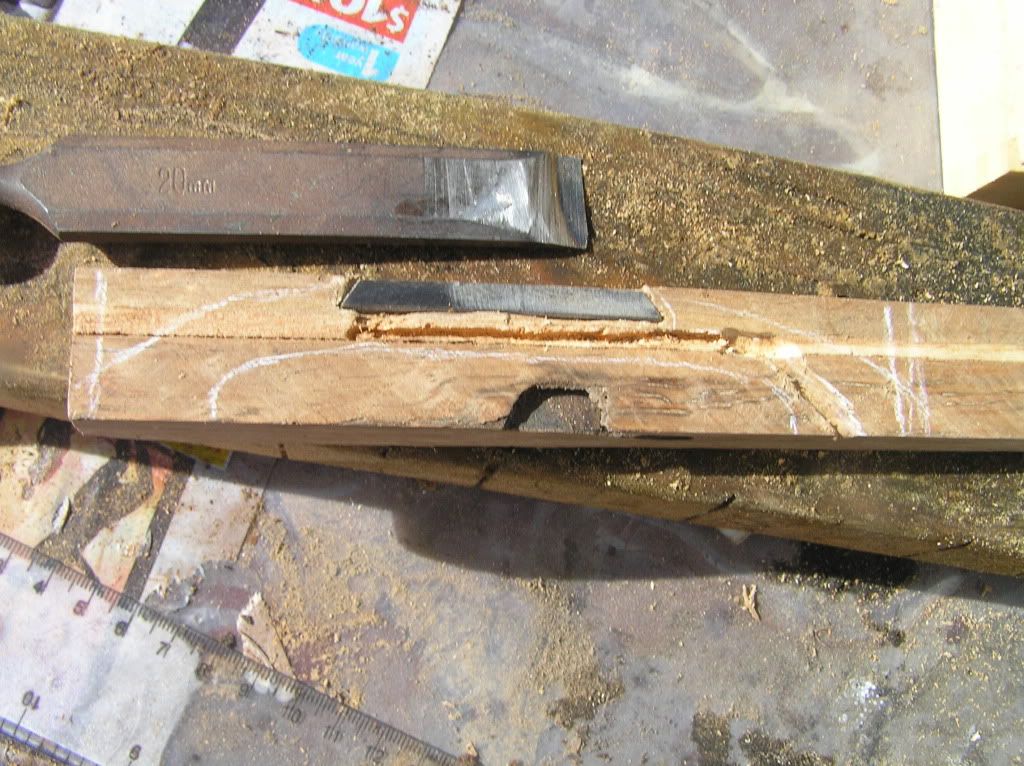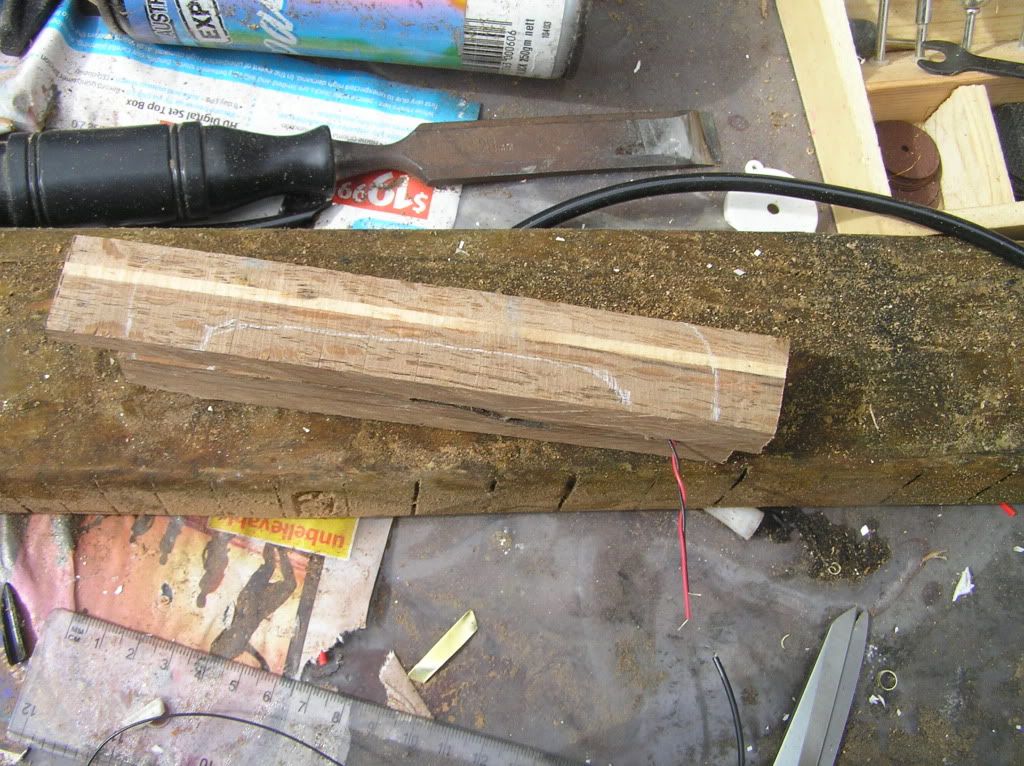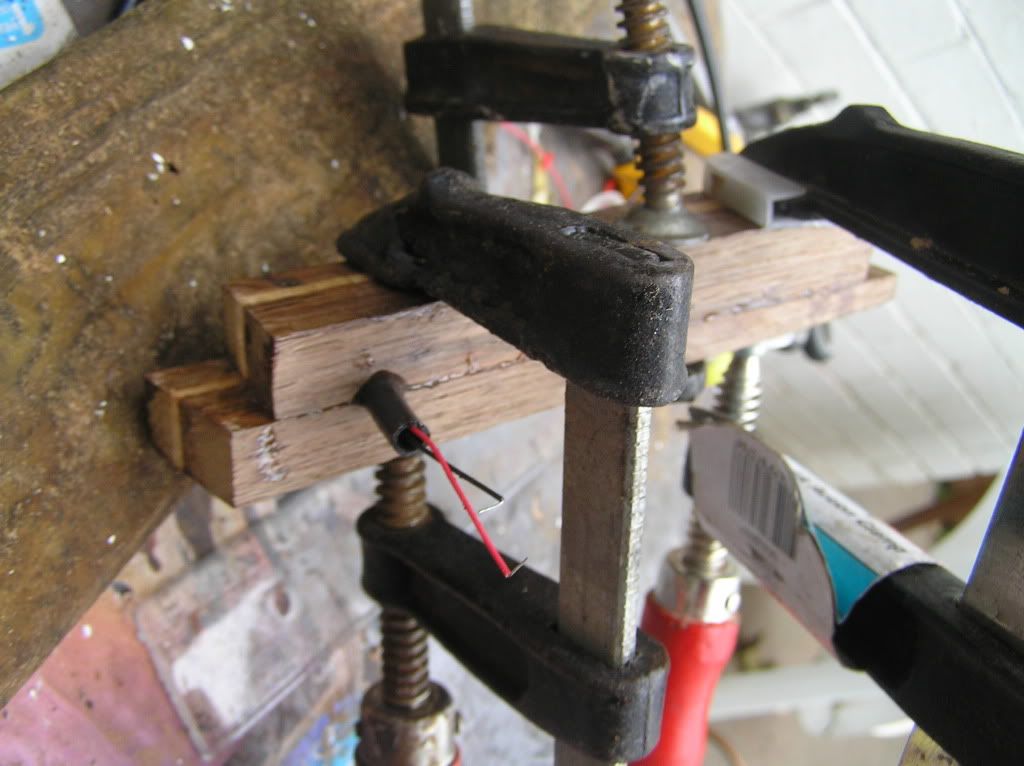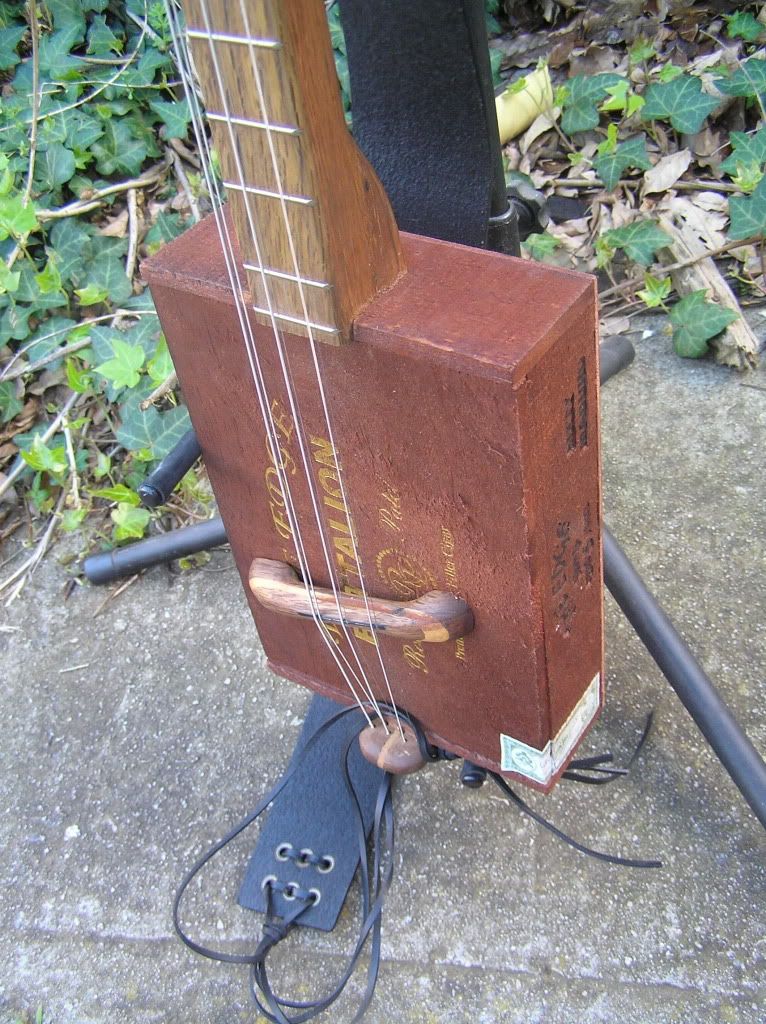So making nicely shaped necks isn't very hard. At least it isn't rocket science. First off, you have to want to shape your CBG neck in a nice rounded fashion BUT that is not a rule at all. No one says you have to round off any neck you make. If you want to then here is a very quick and easy way to make VERY nicely rounded necks that rival CNC machines or routers.
What you will need is a neck of some kind. Here in the US we get 1"x2" (3/4" x 1 1/2") wood slats or boards. Usually poplar or red oak from our home improvement stores. Get what you can and adjust accordingly.
What you will see in the pics below is how I make my CBG necks. I do a laminated neck with (2) 1x2 slats that is cut down to 1x2 (sounds odd but you can see below what I am doing). For this illustration, I have not drawn the neck inside the box or how that is cut. As well, I do a scarf neck which is the angled end you will see. You don't have to to any of this but I do and I'm doing the illustrating :-)
You will also need a plain flat spokeshave. I have a cheap one and regret it with every neck but it works. MAKE SURE IT IS SHARP! A dull spokeshave is not only dangerous, but does not cut well.
So the neck above is how it looks before I mark and cut. See the heel (not carved yet. I usually carve that first). Also see the angle at the right end. That is for the scarf headstock. Again, that is usually attached before I do the neck rounding.
So to get the neck shape even, I'm going to use the spokeshave to 'facet' the neck as if it were 1/2 of an octagon. If shaved evenly will act as a guide to get the rest of the neck very even. I mark about 3/8" from the bottom corners into the bottom and side of the neck. I will make a pencil mark the length of the neck on those measurements which I will shave a flat area down to.
I also angle the ends in so that the neck and heel will transition well. See the areas in red. They will be the material removed with the spokeshave.
I clamp my neck down to a table (in my case I have a woodworking vise). Then I get to work with the spokeshave. Material comes off quickly but I don't want to take too much off too soon. I want the material cut evenly down to the lines. See how it looks like half of an octagon. Nice. This is what I want. You will also note that in this picture, I have drawn the marks for the heel shape.
Once that is complete, I will use the spokeshave to further round out the 'facets' but will not allow the spokeshave to make the sides, bottom, or the original shaved area any thinner. I simply want to round the facets down.
Once the neck is roughly round, I will take a wood rasp -- fine side only -- and continue to round out the neck. If you pay attention to what you are doing, the neck will come out VERY well.
Here are some real pics
Good Luck
-WY
